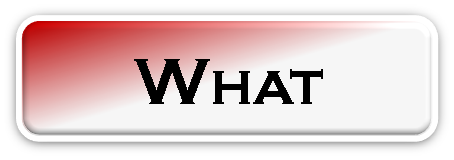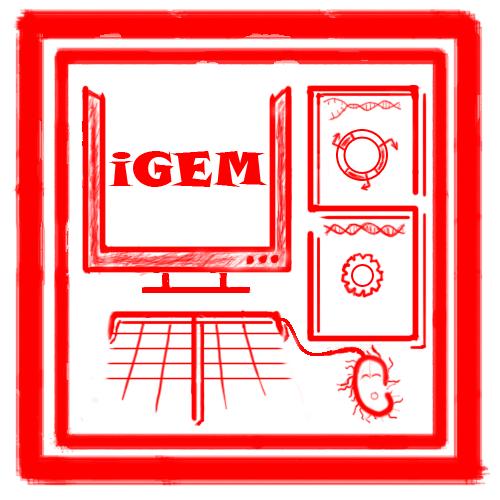|
|
| Line 7: |
Line 7: |
| | | | |
| | | | | | |
| - | =Example 1. Synthetic Oscillator=
| |
| - |
| |
| - | ==Introduction==
| |
| - |
| |
| - | The synthetic oscillatory network designed by Elowitz and Leibler is
| |
| - | ...........
| |
| - |
| |
| - | ==Mathematical Formulation==
| |
| - |
| |
| - | The activities of a gene are regulated by other genes through the
| |
| - | interactions between them, i.e., the transcription and translation
| |
| - | factors. Here, we assume that this system follows Hill kinetic law.
| |
| - |
| |
| - | <math>\begin{align}
| |
| - | \frac{dm_{i}}{dt} &=-a_{i}m_{i}+\sum\limits_{j}b_{ij}\frac{p_{j}^{H_{ij}}}{K_{ij}+p_{j}^{H_{ij}}}+l_{i}, \\
| |
| - | \frac{dp_{i}}{dt} &=-c_{i}p_{i}+d_{i}m_{i}, (i=1,2,...,n)
| |
| - | \end{align}\,\!</math>
| |
| - |
| |
| - | where <math>m_{i}(t), p_{i}(t)\in {\mathbb{R}}</math> are concentrations of mRNA and protein of the <math>i</math>th node at time <math>t</math>, respectively, <math>a_{i}</math> and
| |
| - | <math>c_{i}</math> are the degradation rates of the mRNA and
| |
| - | protein, <math>d_{i}</math> is the translation rate. Term (1)
| |
| - | describes the transcription process and term (2) describes the
| |
| - | translation process.
| |
| - | Negative and positive signs of <math>b_{ij}</math> indicates the
| |
| - | mutual interaction relationship that could be attributed to negative
| |
| - | or positive feedback. The values describe the strength of promoters
| |
| - | which is tunable by inserting different promoters in gene circuits.
| |
| - | <math>H_{ij}</math> is Hill coefficient describing cooperativity.
| |
| - | <math>K_{ij}</math> is the apparent dissociation constant derived
| |
| - | from the law of mass action (equilibrium constant for dissociation).
| |
| - | We can write <math>K_{ij}=\left( \hat{K}_{ij}\right) ^{n}</math>
| |
| - | where <math>\hat{K}</math> is ligand concentration producing half
| |
| - | occupation (ligand concentration occupying half of the binding
| |
| - | sites), that is also the microscopic dissociation constant.
| |
| - |
| |
| - | ==A Tunable Oscillator==
| |
| - |
| |
| - | The original three repressors model is described as follows:%
| |
| - |
| |
| - | <math>\begin{align}
| |
| - | \frac{dm_{1}}{dt} &=-am_{1}+b\frac{p_{3}^{H_{13}}}{K+p_{3}^{H_{1}}}, \\
| |
| - | \frac{dm_{2}}{dt} &=-am_{2}+b\frac{p_{1}^{H_{21}}}{K+p_{1}^{H_{2}}}, \\
| |
| - | \frac{dm_{3}}{dt} &=-am_{3}+b\frac{p_{2}^{H_{32}}}{K+p_{2}^{H_{32}}}, \\
| |
| - | \frac{dp_{1}}{dt} &=-cp_{1}+dm_{1}, \\
| |
| - | \frac{dp_{2}}{dt} &=-cp_{2}+dm_{2}, \\
| |
| - | \frac{dp_{3}}{dt} &=-cp_{3}+dm_{3},\text{ }
| |
| - | \end{align}\,\!</math>
| |
| - |
| |
| - | where <math>a, b,</math> <math>c,</math>
| |
| - | <math>d,</math> <math>H_{1},</math> <math>H_{2},</math>
| |
| - | <math>H_{3},</math> <math>K</math> are tunable parameters that could
| |
| - | change wave amplitude and frequency. For simplicity, we assume that
| |
| - | <math>H_{13}=H_{21}=H_{32}=2,</math> meaning that the system
| |
| - | contains only positively cooperative reaction that once one ligand
| |
| - | molecule is bound to the enzyme, its affinity for other ligand
| |
| - | molecules increases.
| |
| - |
| |
| - | <math>\begin{align}
| |
| - | figure\text{ 1}\text{: wave amplitude} && \\
| |
| - | figure\text{ 2}\text{: wave frequency} && \\
| |
| - | figure\text{ 3}\text{: sensitivity analysis} &&
| |
| - | \end{align}\,\!</math>
| |
| - |
| |
| - | [[Image:]]
| |
| - |
| |
| - | ==An Alternative Topology That Leads to Oscillation==
| |
| - |
| |
| - | The original three repressors model is described as follows:%
| |
| - |
| |
| - | <math>\begin{align}
| |
| - | \frac{dm_{1}}{dt} &= -a_{1}x_{1}+\frac{b_{1}}{K_{1}+p_{2}^{H_{12}}}, \\
| |
| - | \frac{dm_{2}}{dt} &= -a_{2}x_{2}+\frac{b_{2}p_{3}^{H_{23}}}{%
| |
| - | K_{2}+p_{1}^{H_{21}}+p_{3}^{H_{23}}}, \\
| |
| - | \frac{dm_{3}}{dt} &= -a_{3}x_{3}+\frac{b_{3}}{K_{3}+p_{2}^{H_{32}}} \\
| |
| - | \frac{dp_{1}}{dt} &= -c_{1}p_{1}+d_{1}m_{1}, \\
| |
| - | \frac{dp_{2}}{dt} &= -c_{2}p_{2}+d_{2}m_{2}, \\
| |
| - | \frac{dp_{3}}{dt} &= -c_{3}p_{3}+d_{3}m_{3},
| |
| - | \end{align}\,\!</math>
| |
| - |
| |
| - | [[Image:]]
| |
| - |
| |
| - |
| |
| - |
| |
| | | | |
| | | | | | |
 "
"




























